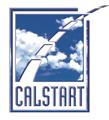CALSTART and Partners Issue Statement Following Senate Environment and Public Works (EPW) Committee Briefing in Washington, D.C.
Last week, CALSTART co-hosted a briefing with the Senate Environment and Public Works Committee that focused on the EPA’s Greenhouse Gas Emissions (GHG) Standards for Heavy-Duty Vehicles-Phase 3 proposed rule. Moderated by CALSTART, a panel discussion with Siemens, Workhorse, Lion Electric, Air Liquide, Terawatt, and National Grid focused on the breadth and variety of market-ready technology and the feasibility of meeting a stringent EPA Phase 3 GHG standard for heavy-duty vehicles. Solutions to infrastructure concerns and grid reliability were also discussed.
The briefing highlighted the zero-emission vehicles and charging infrastructure technology that have brought the once “futuristic ideas” into the present and provide positive developments for the environment and community. The facts about the current state of the technology and market put to rest the old myths rehashed by skeptics.
Fleet owners and operators are buying electric trucks based on their merits, like shrinking fleet maintenance costs, the reduction of diesel pollutants released into the air, and the overall life expectancy of the vehicle. OEMs are focusing on producing and delivering a promise to drivers: an opportunity to drive the future ahead in the present time.
“As a leading OEM of medium and heavy-duty vehicles, we are proponents of having the EPA finalize GHG standards that will advance electrification, and address the industry need toward a zero-emission future,” said Nate A. Baguio, Senior Vice President of Commercial Development at Lion Electric. “The agency’s research shows the transportation sector generates 30% of GHG, and establishing such a stringent rule will result in health benefits for many, including those who live in underserved communities, and are impacted on a daily basis from the harmful effects of pollution.”
“The future of last-mile delivery is electric, and we are excited to have had the opportunity to showcase our W56 to members of Congress and explain the role of EVs in changing the way the world works,” said Rick Dauch, CEO, Workhorse. “The event provided an opportunity for us to highlight Workhorse’s exciting last-mile delivery vehicles and discuss the diverse available technology available to accelerate the broader transition to EVs. We were honored to support the EPW briefing in pursuit of an advanced Clean Truck (ACT) aligned EPA standard to help enable fleet owners and operators to realize the fuel and maintenance savings from commercial EVs. We look forward to continuing the public conversation on the compelling benefits of EVs and the role we play in this critical market.”
Integrating energy and transportation systems to change how the industry refuels requires new solutions and new innovations, which the EPA ruling will spur. Lack of confidence in the ability of the energy services sector to meet this challenge ignores the remarkable progress made. Faster charging infrastructure, declining equipment costs, and industry commitments to spend billions on infrastructure will soon make refueling possible in key hubs and on key corridors across the nation.
“Federal guidance on zero-emission truck rules will drive investment into commercial EV infrastructure buildout,” said Anthony Harrison, Head of Policy and Communications, TeraWatt Infrastructure. “As part of the growing electrification ecosystem, TeraWatt is proud to support the creation of policies to help shape this historic transition as we invest in building out dedicated charging centers for fleets.”
“EPA’s recently proposed vehicle emissions standards provide additional certainty of what the market is already telling us – many more trucks and buses will soon electrify,” said Brian Wilkie, Director, Transport Electrification, National Grid. “National Grid’s electric infrastructure has accommodated 100 years of transition and growth. Through proactive planning and investment, we are already preparing our electric grid to meet this moment, and National Grid’s customer programs provide the near-term support vehicle and fleet owners require. National Grid views this transition as an opportunity to improve air quality in our communities and drive job creation.”
The technology is here. The infrastructure is ready. CALSTART and its partners strongly urge EPA to move forward with a phase 3 GHG regulation that includes heavy-duty penetration projections that are aligned with the momentum put forward with the Advanced Clean Trucks (ACT) standard.
“An accelerated transition to electrified transportation will help to alleviate greenhouse gas emissions that traditionally contribute the highest emissions such as heavy-duty trucks,” said Abby Campbell Singer, Head of Climate and Infrastructure Policy, Government Affairs, Siemens USA. “This long-time partnership with CALSTART is a testament to our commitment in investing in manufacturing, spurring U.S. competitiveness, and our readiness to provide accessible technology available today to make an electrified future a reality.”
“It is critical that EPA finalize its proposal that is aligned with the momentum put forward with the ACT standard. Matching the now nine states that have already adopted the rule is not only possible, but essential to provide a critical market signal to both vehicle manufacturers and infrastructure providers on the scale and timing needed for deploying vehicles and providing interconnection,” said John Boesel, President and CEO, CALSTART. “Strong federal standards are essential for combatting climate change by reducing greenhouse gas emissions. Our recommendations will grow the U.S. ZET industry, create new jobs, and benefit the economy.”
